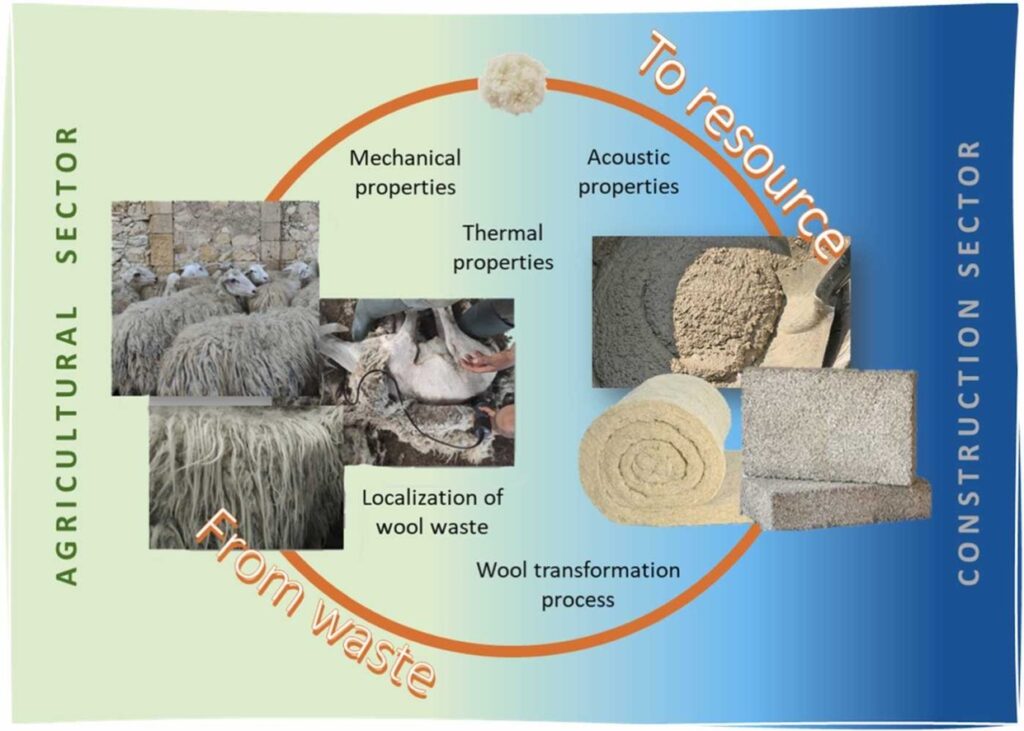Natural fibers offer thermal insulation performance that rivals that of conventional plastics and inorganic materials and provide a fully sustainable alternative to environmentally harmful plastics.
Natural fibers are sensitive to environmental factors such as temperature, sunlight, and humidity, which can significantly shorten their lifespan. Among natural fibers, those derived from animals, like wool, are particularly vulnerable due to their keratin content, compared to plant-based fibers, which are primarily composed of cellulose.
Wool fiber is becoming increasingly important from an environmental perspective. Wool is obtained from sheep fleece and its attributes—durability, hydrophilic/hydrophobic properties, thermal performance, and fire resistance—make it highly suitable for green building applications. Wool’s hollow structure also makes it effective at sound absorption, particularly at mid and high frequencies.
Overall, the thermal and acoustic performance of wool-based building components is comparable to conventional materials like fiberglass, polystyrene, and rock wool.
 Researchers recommend establishing a production scale for recycled wool fibers that aligns with market needs. They also suggest that further mechanical and physical testing of prototypes is essential to advance the use of wool fibers in new green building components. Applying life cycle assessment will help evaluate the sustainability of wool-based construction materials and ensure their viability in the building sector.
Researchers recommend establishing a production scale for recycled wool fibers that aligns with market needs. They also suggest that further mechanical and physical testing of prototypes is essential to advance the use of wool fibers in new green building components. Applying life cycle assessment will help evaluate the sustainability of wool-based construction materials and ensure their viability in the building sector.
You can read the original article at www.azobuild.com

